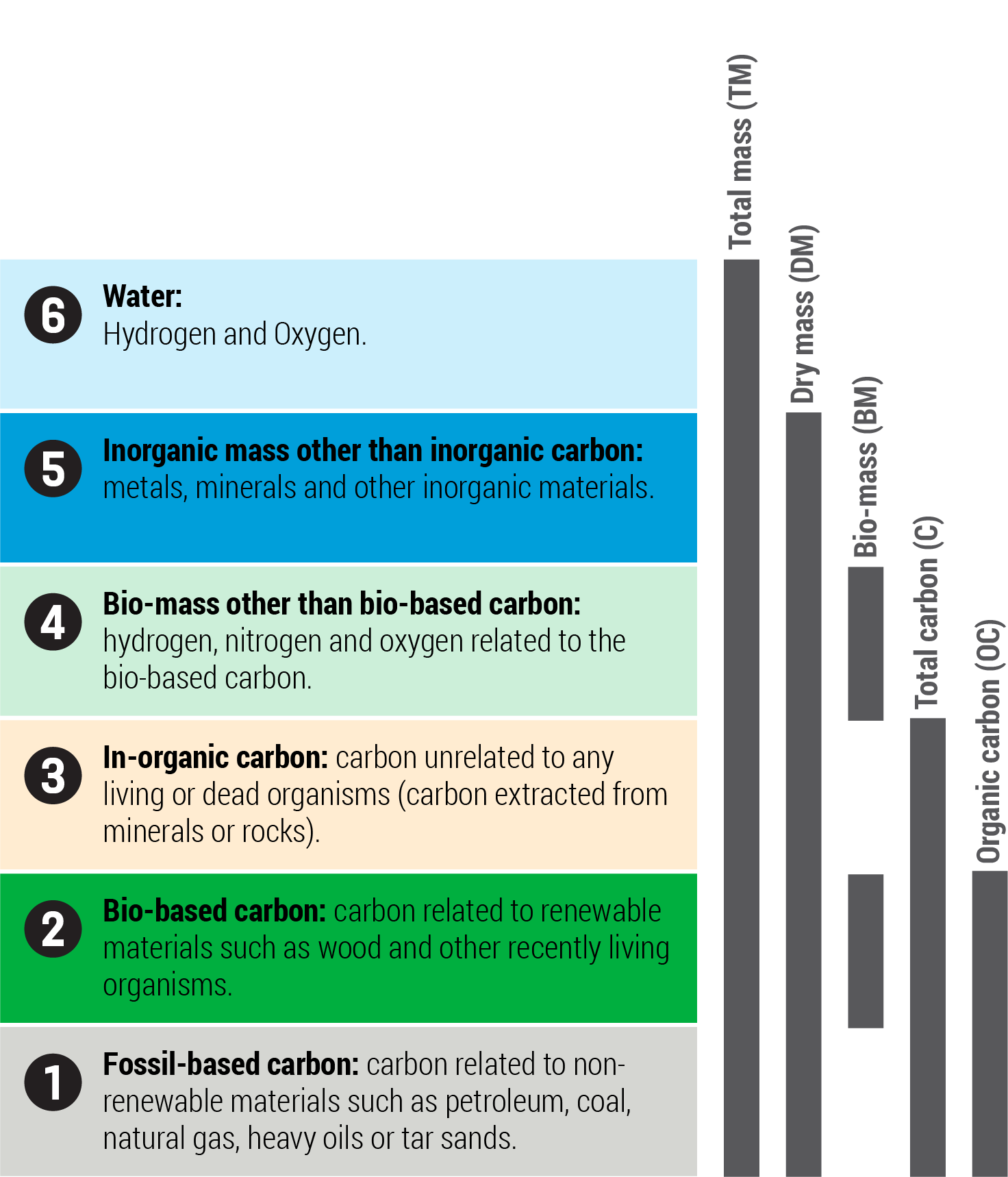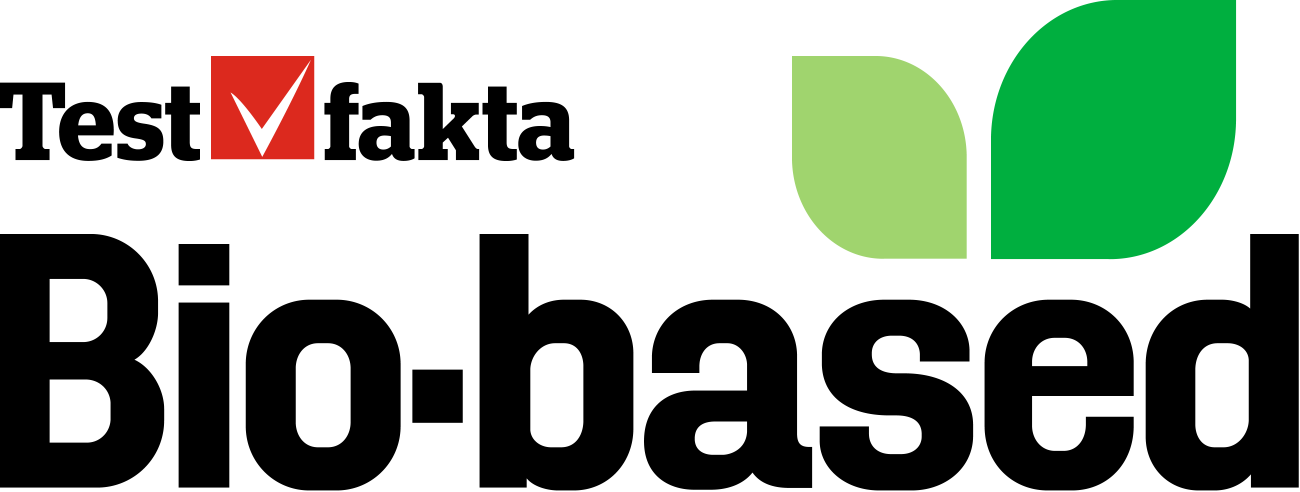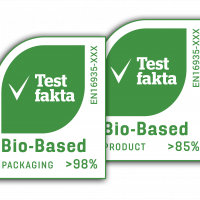The following is a brief description of how the bio-based proportion is calculated and declared. For reference, see Figure 2 and the various blocks referred to in the definitions of the standards below.
In simplified terms, the methods can be divided into two main groups: the ones based on the proportion of biomass (the bio-mass method) and those based on the proportion of bio-based organic carbon (the carbon methods).
Standard EN 16785-1 (the bio-mass method)
The proportion of biomass (blocks 2 and 4) in relation to the total dry mass (blocks 1 to 5) of the product. The biomass share is calculated from a detailed specification of all component of the product. The theoretical value obtained by calculation is verified by analysis of the bio-based proportion of carbon (block 2) in relation to the product’s total carbon content (blocks 1, 2 and 3) by radiocarbon analysis.
Standard ASTM D6866 (the organic carbon method)
The proportion of bio-based organic carbon (block 2) in relation to the product's total organic carbon content (blocks 1 and 2). The proportion of bio-based organic carbon is obtained by radiocarbon analysis. The method does not require a detailed specification of all components.
Standard EN 16640 (the total carbon methods)
The proportion of bio-based organic carbon (block 2) in relation to the product's total carbon content (blocks 1, 2 and 3). The proportion of bio-based organic carbon is obtained by radiocarbon analysis. The method does not require a detailed specification of all components.

Figure 2. Different material components to consider in calculating a product’s bio-based properties.
Communication to the consumer (B2C)
European Standard EN 16935 specifies how a product’s bio-based content should be communicated to consumers. The percentage of bio-based content is calculated and verified according to EN 16785-1 (the bio-mass method). However, for products where the bio-based carbon content (according to EN 16640) is lower than or equal to the bio-based content (according to EN 16785-1), the bio-based carbon content can be declared as the minimum bio-based content of the product.
Declaration between companies (B2B)
European Standard EN 16848 specifies how a product’s bio-based content should be communicated between companies. Besides information about the product type, origin, durability etc., the bio-based proportion must be reported. The bio-based proportion is declared both according to EN 16785-1 (the biomass method) and EN 16640 (the total-carbon method).
Can a product be declared as 100% bio-based?
EN 16935 (B2C) and EN 16848 (B2B) require that the bio-based content be communicated as “minimum percentage”.
This means that in practice it is not possible to declare a product or packaging as 100% bio-based. The highest declared level is at least 99% or >99%.
An exception is if the product or packaging is a pure, untreated natural product such as wood, hemp or pure pulp, where the product is by definition 100% bio-based.




